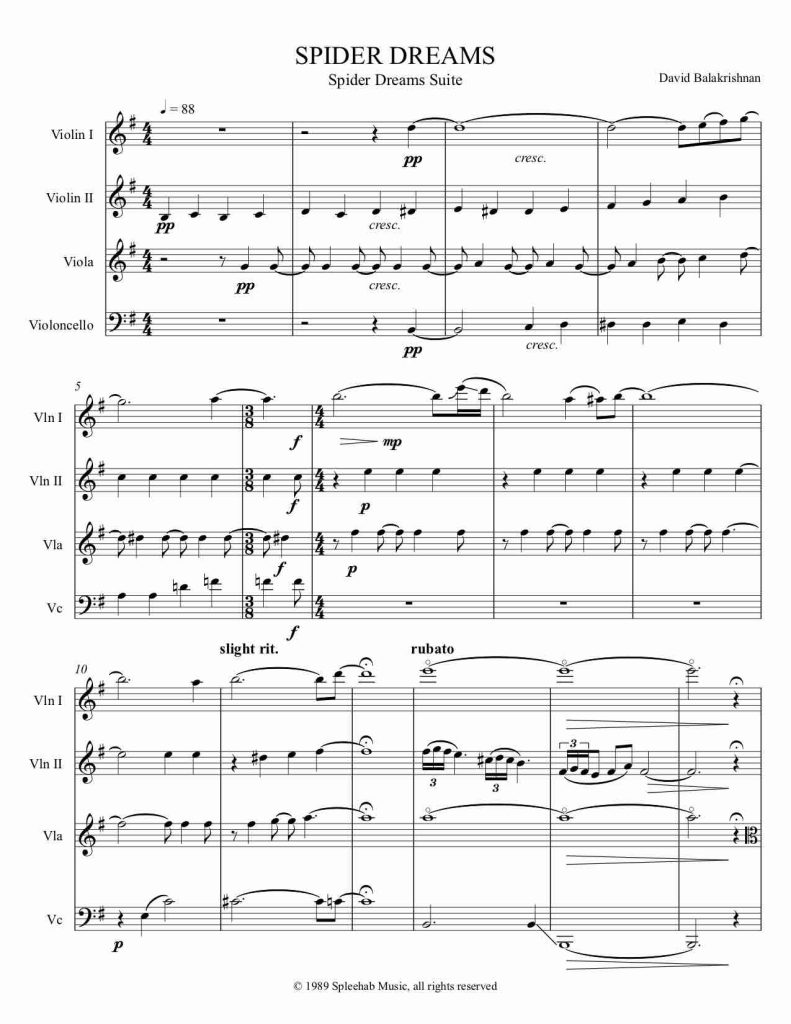By David Balakrishnan, for string quartet. As heard on the album “Spider Dreams.”
Overall description of the movements: “The complete version of the ‘Spider Dreams Suite” is seven movements, these four included here are the ones that were most suitable to being performed as individual pieces on their own, and they work together well as a grouping, in the tradition of the typical western European 19th century four movement string quartet compositional model.” Length: 24:00. (to purchase individual movements separately, click on the respective title below)
“When my daughter Selena was very young, she had a series of nightmares she called her “Spider Dreams”. She would come upstairs into our bedroom in the middle of the night, tell me these terrifying visions she had, then curl up at the foot of our bed and go to sleep, while I stayed awake worrying about her. During that time, I was experimenting with modifying one of the “double-shuffles” used in fiddle tune classics like “Beaumont Rag” and the “Orange Blossom Special.” The result had a menacing quality which reminded me of the alien terror so vivid in a child’s dreams.” Length: 5:07
“I first heard fiddler extraordinaire Mark O’Connor when he was sixteen years old, the year he won his third national fiddle championship. I was blown away. No less devastating was my first in-depth foray into the genius of Ludwig Van Beethoven. “Texas Tarantella” is a fairly brazen attempt to combine Mark’s waltz and hoedown fiddle phrasing style with the dark and devious contrapuntal machinations of Mr. Beethoven.” Length: 4:54
“While the title of the piece, “Waterfall With Blenders,” is a spoof of New Age music titles, the music itself bears the textural and harmonic influence of the “ECM sound”, typified by composers such as Keith Jarrett and Ralph Towner.” Length: 7:05
“‘Marwa In the Pines’ is based on the Marwa raga, a mode which is commonly used in certain types of bluegrass tunes. The lyrics for these tunes typically involve a man telling the story of killing his love, throwing her in a river, getting caught or turning himself in, and facing either a lifetime in jail or suicide. It may be difficult for a westerner to equate an Indian version of the use of this mode with the kind of story line mentioned above. However, Indian classical musicians, for whom all of their music has spiritual significance, feel that this raga symbolizes renunciation, a letting go of sorts. There is an eerie similarity in the way this mode is phrased in these two styles, especially in the melismatic treatment of the motion between the major and minor third, which became the basis of exploration in this piece.” Length: 6:30
